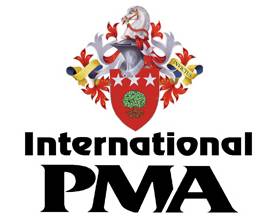Marketing Management
Course Aims
- To develop the student’s understanding of marketing management
Course Syllabus
- Strategic Marketing Decisions:
strategic thinking, strategic windows, strategic options, planning for competitive advantage, developing the marketing plan, Integration of strategic decisions and marketing plans, - Organising, implementing and controlling marketing effort:
Organisation and control for marketing, the changing role of the product manager, profitability analysis, improving salesforce productivity, quality management, measuring customer satisfaction, strategic controls - Sustaining Market Focus:
Renewal and shared values,Sustaining competitive advantage, strategies for change - Strategic Partnership:
interorganisational relationships,types of relationships, global relations - International Marketing:
the challenges Marketing developments and issues in the Service and Non-Business Sectors
Recommended Text
Book Title -:Marketing Management (12e)
Author -: Kotler & Keller
Publisher -: Pearson/Prentice Hall
ISBN No -: 0-13-145757-8
Applied Marketing Communications
Course Aims
- To develop the student understanding of Advanced Marketing Communications
Course Syllabus
- Advertising:
- Advertising and Society: Ethics, Regulation, and Social Responsibility
- Understanding the Consumer
- Advertising Planning and Strategy
- Media Planning and Buying
- Print Media
- Broadcast and Interactive Online Media
- The Creative Side of Advertising
- Sales Promotions:
- Retail and Business-to-Business Advertising
- International Advertising
- The Integrated Campaign
- Public Relations:
- Evolution of Public Relations
- Communications and Crisis Management
- Public Relations writing
- Print and Electronic media
Organizational Behaviour
Course Aims
- To develop the student’s understanding of the general principles of Organisational Behaviour
Course Syllabus
- The influences of social sciences on the study of organisational behaviour
- The individual in the organisation, perception, personality and traits including locus of control, introversion, extroversion, socially acquired needs; application of theories in practical situations
- Theories of motivation including content and process theories, behaviour modification, practical applications of motivational theories including job design
- The nature of groups, formal and informal groups, group cohesiveness, groupthink, characteristics of an effective work group, group interactions, effective group decision making, quality circles, Japanese approach to group decision making.
Recommended Text
Book Title -:Organizational Behaviour (13e)
Author -: Robbins & Judge
Publisher -: Pearson
ISBN No -: 13 978-0-13-207964-8
Additional Reading
Book Title -:Organizational Behaviour and Management (4e)
Author -: Martin & Fellenz
Publisher -: South-Western/Cengage
ISBN No -: 978-1-4080-1812-5
Book Title -:Fundamentals of Organizational Behaviour (4e)
Author -: Andrew J. DuBrin
Publisher -: Thomson South-Western
ISBN No -: 0-324-42139-7
Applied Public Relations
Course Aims
- To develop the student understanding of Advanced Public Relations
Course Syllabus
- Where PR fits into management structures
- Departmental and in-house organisation and structures
- The in-house and consultancy options
- The corporate, counselling, marketing, financial and employee rules
- The function of public relations, two-way information and communication
- Setting and Managing a Budget:
- Public relations as an external resource
- Consultancies, specialist and freelance
- Client relationships and management tools
- Consultancy structures, management and operations
- The Role of Public Relations within an Organisation:
- Commercial organisations and public sector
- Non-commercial organisations including national, cross border and local government, charities, groups and professional associations
- Their roles, responsibilities and position within the organisation
- Definition of Publics – Internal, Local (national), Regional (pan-European)Consideration of the various internal and external publics with which an organisation’s public relations programme may be concerned, such as (but not exclusively)
- Customers and potential customers
- Employees
- Media
- Investors and financial community
- Local community, educational establishments and bodies
- Suppliers
- Opinion formers
- Government
- Public Relations Techniques and their Use:
- Description, characteristics, advantages/disadvantages of different techniques
- Editorial media (printed and broadcast)
- Requirements for all types of editorial media
- Public relations material – what is required, how it is used
- Writing and distribution of material for the media – news, features and promotions
- Editorial responsibilities and constraints, embargoes, political balance, freedom of the media
- Free media
- Events, promotions and functions (such as conferences, facility visits, exhibitions)
- Educational activities
- Media Production:
- Print, broadcast, electronic
- Research and preparation of scripts and presentation material
- Proof-reading and sub-editing
- Printed work (advertisements, direct mail, literature)
- Annual reports, employee reports, house journals
- Graphics (photography, slides, charts, displays)
- Video/film/audio-visual
- Public Relations Planning and Programming including Crisis/Contingency:
- Situation analysis
- Research and appraisal
- Objectives and strategy
- Programme planning
- Programme implementation
- Evaluation and progress reporting
- Budgets
- Assessment of results
- Codes of conduct and their rationale (e.g. IPR, PRCA)
Laws affecting public relations practice including (but not exclusively) – Defamation and slander, Copyright, Financial Services Acts,Companies Acts, Codes and codification (e.g. the role of the OFT), Employment Acts
Applied Marketing Research
Recommended Text
Book Title -:Marketing Research: An Applied Orientation (5e)
Author -: Naresh K. Malhotra
Publisher -: Pearson/Prentice Hall
ISBN No -: 0-13-227946-0


